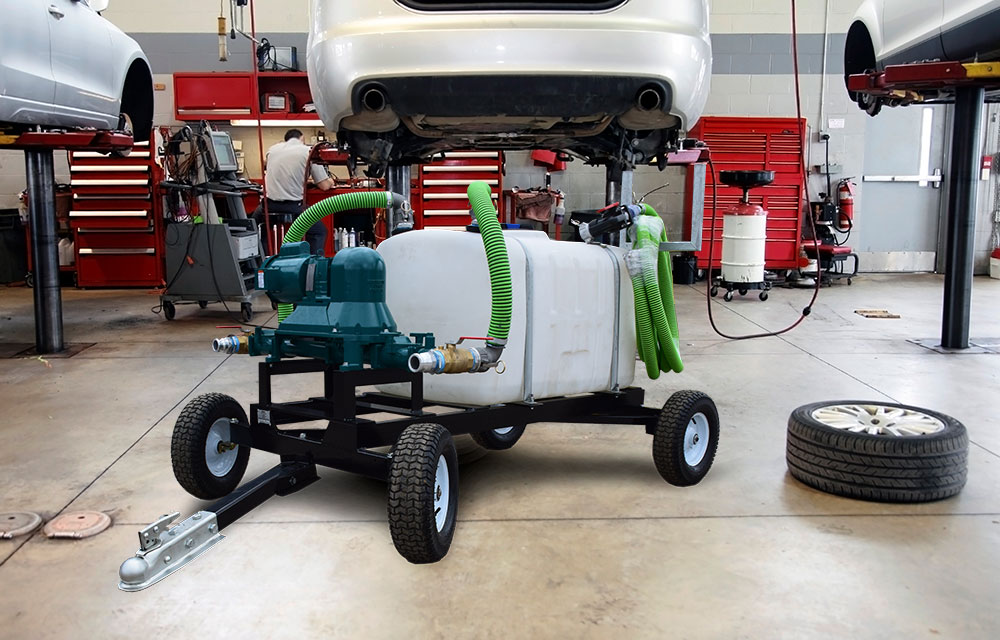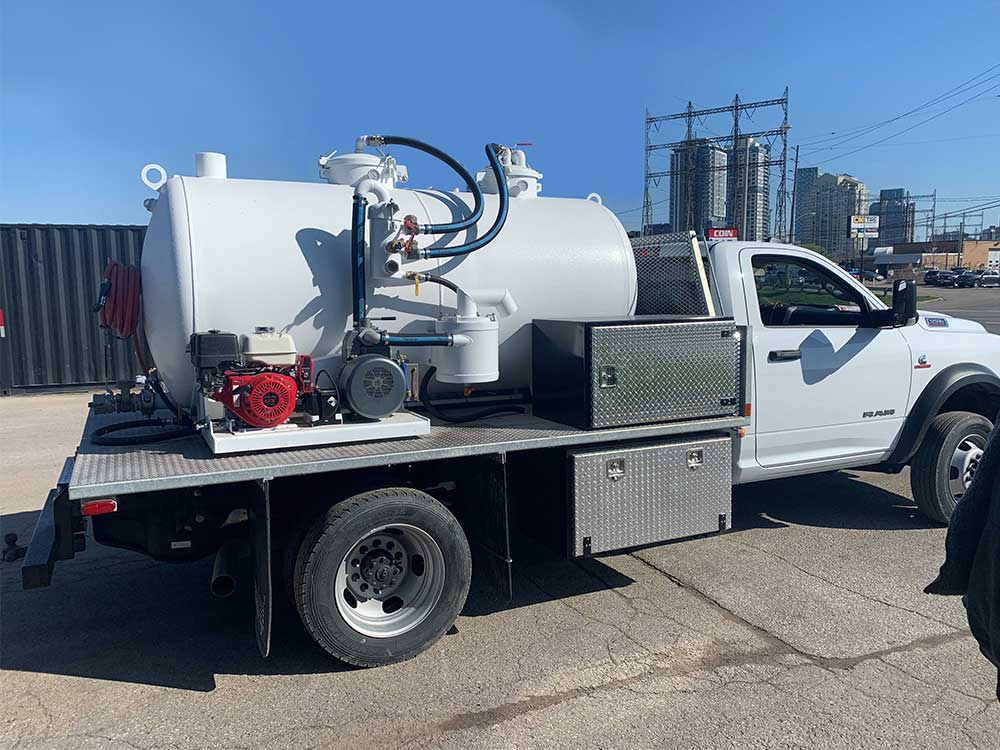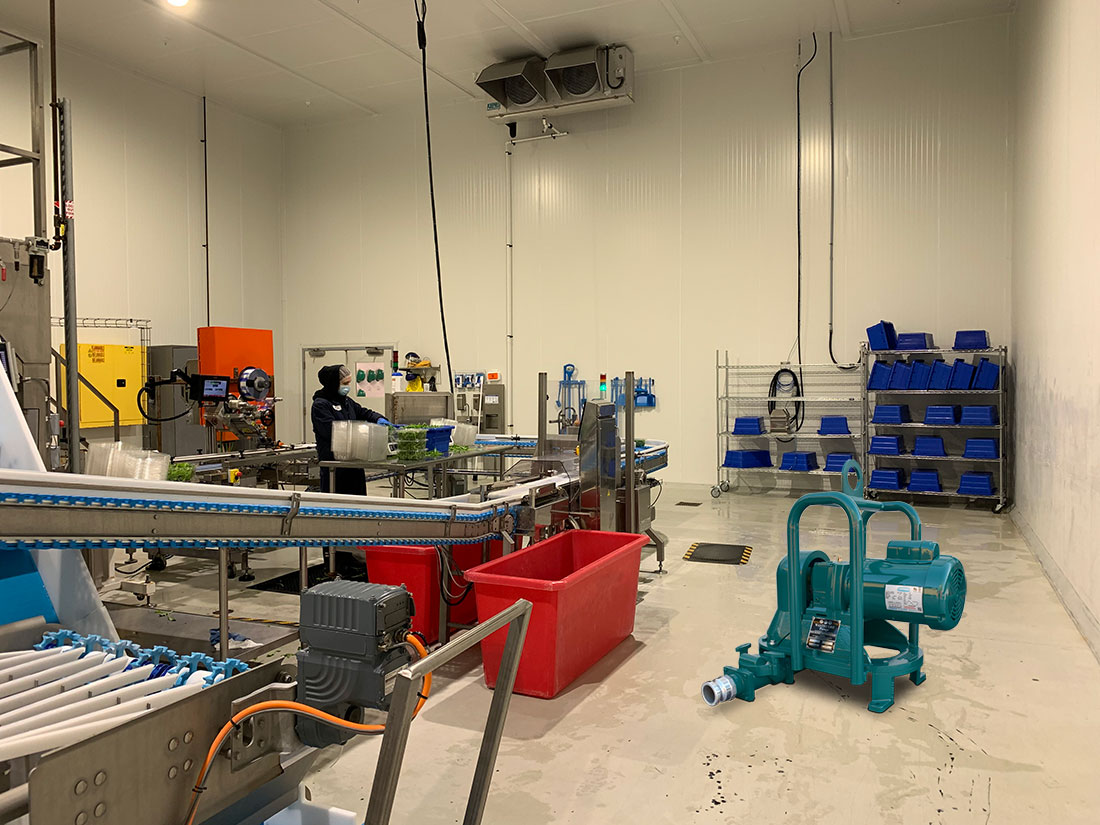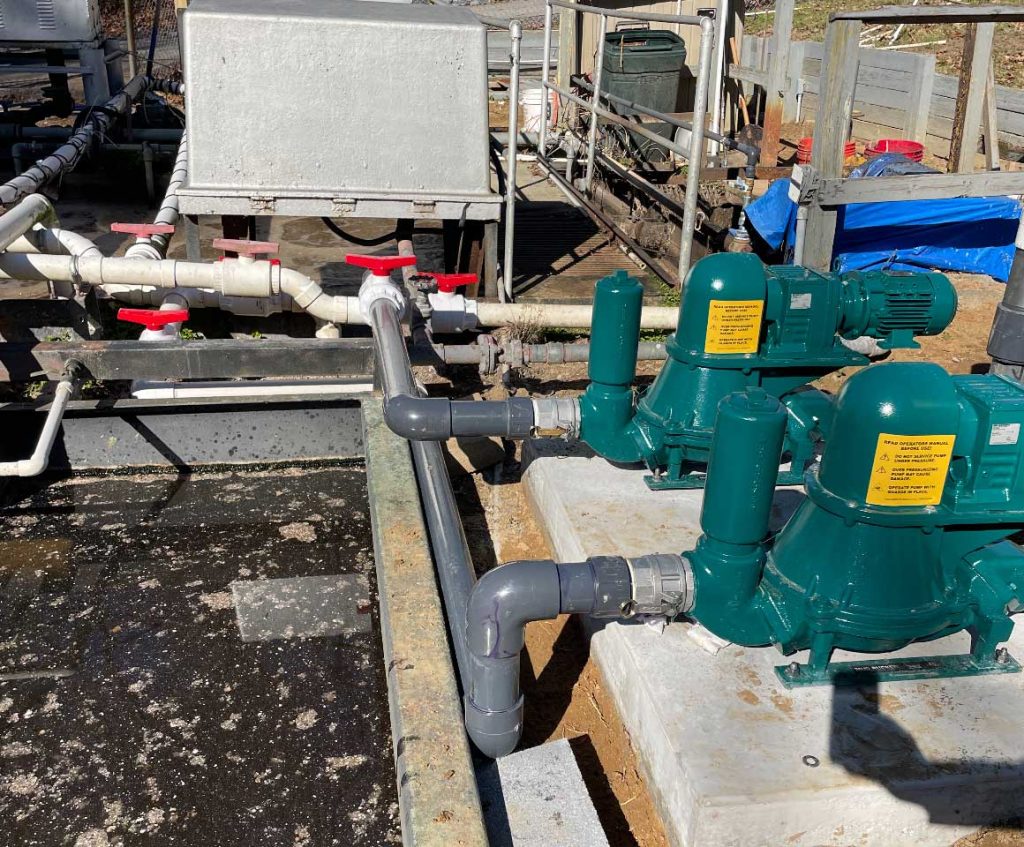
Pumping out waste motor oil, gear oil and other fluids like coolant, and grease can be easy for auto repair jobs, boat service and repair and tractor service for farms and utility vehicles. Wastecorp waste collection systems store old engine fluids in a waste tote tank and can be outfitted with mobile systems like the model you see here. This makes it easier to move around the service area to pump out oil from multiple cars, trucks, boats, tractors or even locomotives. The trick is to find the system that works best for your needs. The 100 gallon model that you see here is ideal for medium to large size service centers making it easy to pump out a days worth of vehicles without having to discharge the tank. Wastecorp also offers custom fleet specs for national service centers to integrate the pump out into the training program for employees. Contact Wastecorp to learn more about waste oil and fluid collection systems.
How to Pump Out Waste Oil
When we talk about pumping out waste oil there are several different kinds such as motor oil from cars, buses, locomotives, boats, industrial machinery construction sites involving demolition and so much more. There is also cooking oil based waste oil like vegetable oil and waste trap grease. The one thing each have in common is that the waste oil is typically stored in totes, bins, vaults, sump pits or containers to be pumped out.
Pumping out waste oil requires careful handling to prevent environmental contamination and to comply with regulations. Here’s a general guide on how to pump out waste oil:
Safety Precautions: Before starting, ensure you have the appropriate safety gear such as gloves, goggles, and protective clothing. Make sure the area is well-ventilated to avoid inhaling harmful fumes.
Identify the Oil Source: Locate the source of the waste oil. This could be a storage tank, a sump, or another container.
Prepare Equipment: You’ll need a pump suitable for handling oil. Diaphragm pumps or vacuum pumps are commonly used for this purpose. Make sure the pump is clean and in good working condition.
Prepare Containers: Have suitable containers ready to collect the waste oil. These could be drums, barrels, or tanks designed for oil storage.
Positioning: Position the pump near the source of the waste oil and ensure it is securely connected to both the source and the collection container.
Check Connections: Double-check all connections to ensure there are no leaks. Leaks can lead to spills and environmental damage.
Start Pumping: Turn on the pump and begin pumping the waste oil from the source into the collection container. Monitor the process carefully to prevent overflows.
Monitor Progress: Keep an eye on the level of oil in both the source and the collection container. Stop pumping once the source is empty or the collection container is full.
Dispose of Waste Oil Properly: Once the waste oil has been pumped out, it needs to be disposed of properly. Depending on local regulations, this may involve recycling, reusing, or properly disposing of the oil at a designated facility.
Clean Up: After pumping out the waste oil, clean up any spills or drips to prevent contamination of the surrounding area.
Maintain Records: Keep accurate records of the amount of waste oil pumped out and how it was disposed of. This may be required for regulatory compliance.
Follow Regulations: Ensure that you are following all relevant regulations and guidelines for handling and disposing of waste oil in your area.
Regular Maintenance: Regularly inspect and maintain your pumping equipment to ensure it remains in good working condition.
Always consult with local authorities or environmental agencies to ensure compliance with regulations specific to your location when handling waste oil. Improper handling and disposal of waste oil can have serious environmental consequences and may result in fines or penalties.
Kinds of Equipment for Waste Oil Pumping
Vacuum Pumping Systems

Vacuum pump systems are generally available in either slide-in systems or trailer mounted systems. The slide in systems include a large containment tank, hoses, pump system and connections. The user pumping out waste oil connects the system to an existing truck chassis, flat bed or box truck. Sizes are available from 50 US gallons to over 3000 US gallons but most grease trap pumpers and waste oil service companies select systems from 1000-2000 gallon sizes.
Waste Oil Diaphragm Pumps

Diaphragm pumps are among the most versatile pumping methods for waste oil. Diaphragm pumps have the ability to pump waste oil containing solids and slurries. There are a number of pump models available depending on the fluid thickness you are handling.
Check Ball Style Diaphragm Pump
Check ball style diaphragm pumps are available in 2″, 3″ and 4″ connection sizes (on both the suction and discharge).
A check ball style diaphragm pump uses ball valves to assist in moving thicker types of cooking oil and used motor oil.
Customizable diaphragm material (elastomers) depending on the type of fluid. Santoprene, neoprene, Buna-N, Viton (available on some makes).
A variety of mountings are available like dolly kits, trailer mounted packages and skid mounted packages that can be moved, with a forklift, tractor, ATV or truck.
Here is a reputable manufacturer link for check ball style diaphragm pumps https://wastecorp.com/3B-EC-3-Inch-Pro-Series-Electric-Diaphragm-Pump
Flapper Valve Style Diaphragm Pump

Flapper valve style diaphragm pumps use a flapper check valve to transfer waste oil instead of a ball check
Flapper valve pumps are also available in 2″, 3″ and 4″ connection sizes
Select from electric, gas, diesel, hydraulic or air powered pumps
This style of diaphragm pump is designed for thinner types of fluids